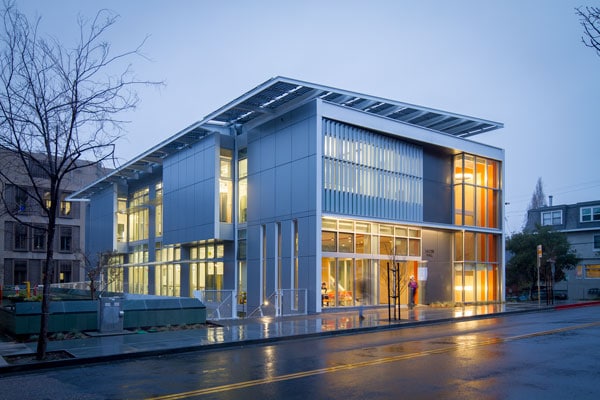Anybody who has remotely paid attention to news from the west coast for the past few years should be able to make two distinct observations. First, thanks to sleep deprivation and the dawn of the Information Age, ambitious, high-reaching business startups burgeoning from Silicon Valley have transformed the United States economy. And second, California is in the arid midst of a punishing drought. While these matters are simultaneously impactful in their respective ways, they tend to occupy different parts of our mind—when in reality, they couldn’t be more inextricably intertwined.
It’s almost serendipitous that the center of technological progress and target of creeping ecological dehydration should coexist within the same state borders, for it is the intelligence radiating from the Silicon bubble that will be most vital to adapting to a future that many fear will be environmentally perilous. Such brainpower was the kind that the College of Engineering at University of California, Berkeley had in mind when looking to establish a space on campus for the kindred assets of creativity and sustainability to germinate and intermingle. William Leddy of Leddy Maytum Stacy Architects, principal architect in charge of the university’s new Jacobs Institute for Design Innovation, shared the dean’s vision in creating space that’s not just advantageous to engineering students, but also attractive to curious students of all disciplines who are ripe for creative engagement.

PHOTO: TIM GRIFFITH
Location Berkley, CA
Client University of California, Berkeley
Size 24,035ft²
Completion August 2015
Program Education
Awards AIA Top Ten Project, AIA San Francisco Sustainability Commendation, UC Office of the President Best Practice Award for Energy Efficiency in New Construction
Certifications Tracking LEED Platinum
Architect Leddy Maytum Stacy Architects
General Contractor/Construction Manager Hathaway Dinwiddie
Landscape Architect Cliff Lowe Associates
Civil Engineer BKF
Structural Engineer Forell/Elsesser
MEP/Fire Protection Integral Group Engineers
“We wanted the architecture to tell the story,” Leddy says. “We wanted to explore this narrative of how you engineer the future, how you engineer environments that can have lasting significance in the lives of students moving on.” Key to any narrative that glides toward the future is a lucid illustration of the causal preceding events of the present. For this, transparency played a central roll. Designing a space that’s amply transparent would expose the fundamental elements of “creative collision,” student collaboration, and budding ingenuity in the rising action portion of Leddy’s dramatic structure.
The employment of large glazing panels would equip the interior with charitable daylight, inspiring those aforementioned “creative collisions,” chance encounters, and exchanges of ideas to occur all while extending a connection to students on the other side of the wall. “We wanted to reveal the hum of creativity inside the building to the rest of the campus,” Leddy explains, though that hum travels through physical boundaries inside as well. Like much of the exterior, the studio spaces are also largely exposed to students casually passing by, diffusing the tone of throughout the strata of the campus.
It makes little sense to construct a space designed to incubate the evolution of a sustainable future if said space isn’t an imposing expression of sustainability itself. Positioning the building in a way that would allow it to inherit the benefits of its natural environment most maximally was of top priority. “We oriented the building appropriately to the sun to maximize daylighting and to the winds to maximize natural ventilation,” Leddy says, explaining that it facilitated “an ideal balance of daylight from one side to the next so we could minimize electric lighting loads during the day and further incorporate a variety of daylighting strategies to enhance that, while of course reducing energy loads by coming up with energy efficient heating systems and cooling systems. One system among these that you won’t find is air conditioning. The design team opted instead for what Leddy calls a “bump cooling” system, which demands far less energy and only adds appropriately supplemental cooling. Because the building opens to the prevailing winds, 100% of the instructional spaces above the basement level and 85% of regularly occupied spaces are naturally ventilated. When the windows are closed, mechanical ventilation provides 30% of added fresh air.

The designers oriented the building appropriately to the sun to maximize daylighting and to the winds to maximize natural ventilation. PHOTO: TIM GRIFFITH
While Leddy’s team was able to use the campus’s natural surroundings to the building’s benefit, tackling irrigation proved to be somewhat of a problem. The square footage available on the site was tight and redolent of an urban cityscape, rendering the list of options relatively scant. The building itself was built over an existing two-story basement with very little sub-grade space for things like rainwater cisterns. Working within these constrained parameters, the team was able to install a drip irrigation system that has reduced water consumption to about half of the U.S. Green Building Council baseline. Further tending the urgency of California’s regional drought, the system features an automation function that cuts off water consumption when vegetation has been sufficiently treated.
The PV array overhead, angled at a distinguishing, idiosyncratic tilt, is the most eye-catching of the Jacobs Institute’s sustainable strategies. But visually striking or not, asserting an aesthetic that expresses the underlying character of a space is a virtue that Leddy views as fundamentally symbiotic with the practice of sustainable building, even to the extent of integrating specific pieces of machinery into the center of that artistic expression. The array, Leddy argues, “is expressive of the idea that this space at one level is a work of architecture while it’s also a machine for producing energy, and it retains that engineering quality.” By introducing the purely mechanical into the boundary of the broader architectural statement, the building itself, much like the glazing, offers a transparent look into how separate integral components that serve distinct practical functions work cohesively to shape the project as a whole—whether it be the next great irrigation device or the built environment that houses it.
Download a PDF of this story here.

